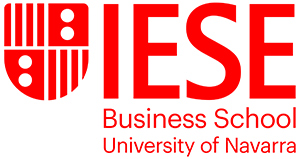Starting a speech in an impactful way is not just an art; it’s a critical skill for any leader. Conor Neill, a communication professor at IESE, explains that “the first few seconds are when tension and attention are at their highest.” In this article, we’ll explore tried-and-tested techniques to capture that initial attention, offering clear examples and practical strategies to make each of your openings resonate strongly with your audience.
The science of first impressions: the power of the first seconds
The opening of a speech is when you gain or lose your audience’s attention. As Neill mentions in his video How to Start a Speech, the first few seconds are crucial: “it’s when you have their maximum attention.” During this moment, attendees subconsciously evaluate whether what they are about to hear is relevant, interesting, and valuable to them. If you want to capture their interest and ensure they stay with you, you’ll need a well-planned, intentional opening.
5 effective strategies to open a speech with impact
1. Share a relevant personal story
Charismatic leaders often begin their speeches with a personal anecdote that contains a lesson or an emotional connection. A well-chosen story has the power to humanize you in front of your audience and build empathy. Neill says, “People remember stories because they evoke emotions.” By sharing an authentic experience, you help the audience see you as approachable and trustworthy, establishing a connection that goes beyond formality.
Example: If you are speaking on resilience in times of crisis, you might share a moment when you had to lead under pressure, highlighting the tough decisions and the lessons you learned. These types of stories, especially if they address situations everyone can relate to, immediately connect with the audience.
2. Ask a provocative question
A question is a powerful tool to actively engage the audience from the start. Neill suggests that asking a question “forces the audience to think and gives them a reason to listen.” A good question not only grabs attention but also stimulates interest and reflection within your audience. The key is to pose a question that ties into the central theme of your speech and is intriguing enough not to have an obvious answer.
Example: In a speech on innovation, you could start by asking, “What would you do if your main business disappeared tomorrow?” This unsettling question puts the audience on alert, creating the need to listen to find possible answers.
3. Use an impactful statistic
Neill also recommends using data as an effective opening method, especially if it’s surprising or revealing. Sharing a powerful figure allows the audience to visualize the magnitude of a problem or challenge, making it more tangible and relevant. This is particularly effective if you then connect that data point to a question or a call to action.
Example: In a speech on sustainability, you could begin by saying, “Every year, 18 million hectares of forest are lost—equivalent to 27 football fields every minute.” By providing a specific data point along with a relatable comparison, you trigger an immediate reaction and set a solid foundation to dive deeper into the topic.

4. Start with dramatic silence
It may seem counterintuitive, but one of the most effective ways to start a speech is with silence. A few seconds of pause before you begin creates tension and anticipation, capturing the attention of everyone present. Neill explains that silence “gives the audience time to focus on you; you capture their attention without saying a word.” This technique must be used confidently, as it conveys both authority and calm.
5. Quote a relevant person
Quoting a well-known person can add depth and credibility to your words. Choosing a quote aligned with the theme of your speech can provide your audience with a different perspective or reinforce an initial message. For example, if you’re speaking about leadership, you could open with a quote from great leaders like Mandela or Churchill and then connect their words to your message.
Common mistakes when starting a speech and how to avoid them
Avoid the predictable and boring
Starting with “Thank you for the opportunity to be here” is one of the least effective openings. Neill emphasizes that “formality can make you lose the audience’s interest.” Instead of a generic introduction, be brief and direct. Formalities can be important but should be quick and genuine.
Don’t start with statistics without context
If you decide to open with a data point, make sure it’s directly linked to the issue you’ll be addressing. A common mistake is throwing out figures that, without context, may confuse rather than inform. Always add a brief explanation or question to highlight the relevance of the data.
Avoid self-indulgence or excessive praise
The audience is there to hear ideas, not a list of personal achievements or lengthy acknowledgments. The most impactful leaders are those who come across as humble and focused on their message. Let your message speak for itself, and maintain modesty.
Final tips for a memorable opening
Mastering the art of starting a speech takes practice and authenticity. Here are some practical tips:
- Know your audience well: Choose stories, data, or questions that will resonate with them. What works for a sales team might not be effective for a board of directors.
- Practice the opening several times: Confidence in the opening shows and increases your credibility. Practice will allow you to deliver it naturally.
- Be brief but powerful: The ideal opening should not exceed a couple of minutes. Aim to make a quick impact and then proceed to the central message.
The ability to start a speech with impact not only enhances your communication skills but can transform how your ideas and proposals are perceived. An effective start gives you control of the stage and ensures your audience is receptive to the message. As leaders, our voice and presence are powerful tools; developing them through effective openings strengthens our capacity to influence and guide.
IESE’s leadership programs provide the ideal space to perfect these skills and make every speech a memorable moment. To improve your communication techniques and learn to lead authentically, explore IESE’s executive and master’s programs.
Other articles you may find interesting:

















